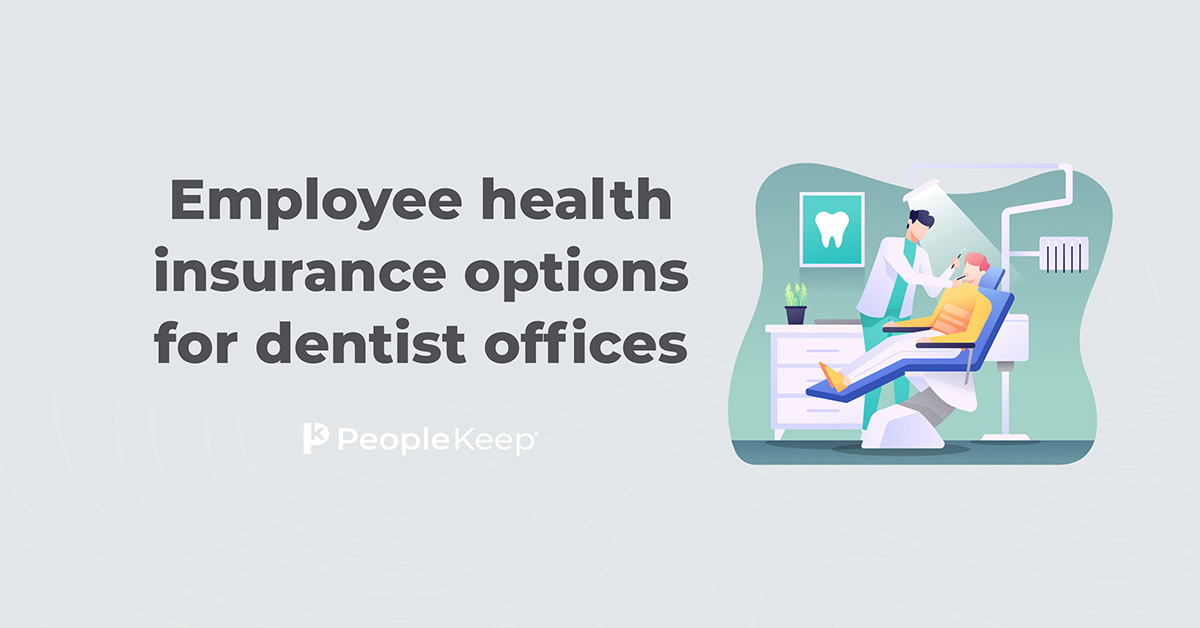Five ways to support your employees’ mental health
By Elizabeth Walker on June 13, 2025 at 8:15 AM
Burnout and work-related stress can have a negative impact on your employees’ physical and mental health. Traditional group health plans may help your staff with their physical wellness. But they may not have in-network mental health services.The U.S. Government Accountability Office found that people have more difficulty finding in-network providers for mental healthcare if they’re new patients1. Additionally, psychiatry and psychology appointments are between eight and 11 times more likely to be out-of-network, making effective treatment more expensive2. So, how can employers support mental wellness when many health insurance policies don’t cover these essential services?
The following article will discuss five ways to prioritize your employees’ mental health to create a more positive company culture.
In this blog post, you’ll learn:
- How to enhance your benefits package to support physical and mental health conditions.
- Why open communication and healthy cultures are essential to preventing burnout.
- The additional resources and training you can provide to empower employees to manage job-related stress levels.
1. Boost your benefits package with an HRA and wellness stipend
Your employees’ mental health and happiness are major factors in the growth and success of your company. One way to address both issues is by refreshing your benefits package by offering a health reimbursement arrangement (HRA) and a wellness stipend.
Let’s start with HRAs. An HRA is an employer-sponsored health benefit that allows you to reimburse your employees tax-free for qualified out-of-pocket medical costs. IRS Publication 5023 and the CARES Act4 outline the complete list of qualified items. But among the eligible expenses for reimbursement are therapy, counseling, and prescription drugs.
With an HRA, you can make it easier for individuals to access and afford mental health treatment. You give your employees a set monthly allowance that they can use to buy medical care. Then, you reimburse your employees up to their allowance amount once they submit proof of an eligible medical expense. Any unused HRA funds stay with you at the plan year's end or if an employee leaves your company.
Here are the three most popular HRAs:
- The qualified small employer HRA (QSEHRA)
- The individual coverage HRA (ICHRA)
- The group coverage HRA (GCHRA), also known as an integrated HRA
With an ICHRA or QSEHRA, employees enroll in the individual health insurance plans of their choice. This allows them to choose a plan that includes mental health services.
In addition to an HRA, having an employee wellness program at your workplace is a great way to show your commitment to your team’s mental health. But, pairing that program with a wellness stipend enables your employees to invest in items that matter most to them, regardless of whether your company is remote or in-office.
With a wellness stipend, employees can pay for various activities and programs that promote a healthy lifestyle, such as:
- Mobile wellness apps
- Gym memberships
- Fitness trackers
- Mental health counseling
- Healthy meal delivery services
- Personal trainers
- Home exercise equipment
Stipends are taxable for you and your employees. But even so, offering an HRA and a wellness stipend together can financially support your staff on their journey to better physical and mental health.
2. Talk frequently and openly about employee mental health
It’s no secret that there’s a stigma around mental health issues. But you can help combat it by communicating about workplace mental health concerns early and often.
If you offer benefits that cover employee mental health services, don’t let open enrollment be the only time you talk about it. Remind your employees year-round about the mental health benefits available to them.
Also, ensure your employees have frequent opportunities to talk to their managers one-on-one. Employee burnout is a worsening problem in today’s workforce, especially among remote employees with little distinction between work and home.
Frequent one-on-ones allow managers to assess employees’ psychological well-being, look for signs of stress, and adjust their workload before things worsen.
3. Make time for fun at work
Most employees' day-to-day work is about productivity. But human beings are social. When employees connect outside of completing work tasks, they strengthen their relationships and can experience a greater sense of belonging within their team.
Social interaction can have positive impacts on your employees’ mental health. Studies show that social connectedness is crucial for overall physical health, mental well-being, and longevity5. Even if it’s only small breaks throughout the day to do something fun, give employees a chance to decompress, improve their mental health, and engage with their coworkers.
Whether it’s with office happy hours, monthly book clubs, or group activities and games, you can incorporate fun into your employees’ workday in many ways. Better yet, it’s also a valuable recruiting tool. Seventy-three percent of respondents to a recent survey believe a positive workplace culture is important, in contrast to 27% that reported a good salary as most important6. So, prioritizing a happy work environment is vital to your company’s long-term success.
4. Ensure your employees have adequate vacation time
If you’re noticing low morale or high turnover, it may be time to revisit your paid time off (PTO) policy. PTO allows employees to take time off when needed, whether for a vacation or a mental health day. It promotes a healthy work-life balance, boosts employee retention, and helps improve job performance.
Here are a few ways you can structure your PTO policy:
- Defining a set number of days per year
- Allowing employees to accumulate a certain amount of PTO per pay period
- Enabling rollover PTO days from one year to the next
- Offering unlimited PTO, so employees can take off as much time as they want
Some employees may feel judged for taking time off to enjoy their daily lives. That’s why you and other workplace leaders should encourage them to use their PTO to enjoy time off with friends and family, which can help them feel refreshed and relaxed.
Vacationing isn’t only for your employees with mental health issues. It’s also a key factor in their productivity and effectiveness. Neuroscientists have found that chronic exposure to stress harms the brain by triggering anxiety or depression. Taking a vacation or offering flexible work hours helps the mind rest and heal, so your staff can return to work energized.
5. Offer mental health training and resources
Another way to drive mental health awareness is to offer training and resources so employees can learn valuable coping mechanisms. One idea is to research local experts who can host workplace seminars on topics like anxiety, job-related stress management, and mindfulness. Remember to provide virtual workshops and webinars if you have remote or hybrid employees.
Sending an anonymous survey for feedback is another great way to find out what topics interest your employees and help them deal with their mental health challenges. For example, if your office has many new mothers, a discussion on postpartum depression may benefit them.
Not only do trainings and talks give your employees expert guidance, but they also help them see they aren’t alone in the challenges they’re dealing with. Roughly 23% of U.S. adults experienced a mental illness in the past year7. By offering greater resources for employees, they can connect with other teammates who have mental health struggles like theirs.
In addition to formal training, you can create peer support groups or host virtual webinars. You can also add an employee assistance program (EAP) to your benefits package.
EAPs are mental health resources that can help an employee resolve various issues in their personal life, such as:
- Relationship troubles
- Financial stress
- Employee health and emotional wellness struggles
- Job-related stress, such as employee performance issues, job insecurity, or lack of career growth opportunities
Employers generally cover the cost of EAPs, which offer access to mental health professionals via phone, online, or in person. Patients can feel safe knowing their conversations will remain confidential while seeking the care they need.
Conclusion
You may not be able to prevent employees from experiencing a mental health condition at some point in their lives. But offering mental health support helps employees bring their best selves to work daily. It also creates a more motivated, innovative, and productive workforce. That’s why having strong mental health policies is crucial for your staff and business goals.
Updating your benefits package and focusing on a healthy workplace will help you recruit and keep talented employees. If you’re looking for new ways to offer affordable benefits to your employees, PeopleKeep by Remodel Health can help! Schedule a call with our HRA specialists to learn more about personalized health benefits for your company.
This article was originally published on February 11, 2022. It was last updated on June 13, 2025.
1. Mental health care: Access challenges for covered consumers and relevant federal efforts
2. Behavioral health services are more likely to be out-of-network than physical health services
4. CARES Act
5. The power of connection: Self-care strategies of social wellbeing
6. Positive work culture provides an 'emotional paycheck' for most
7. MHA Releases 2024 State of Mental Health in America Report
Check out more resources
See these related articles

How to maintain a work-life balance
Struggling to juggle work and personal life? Discover effective strategies to maintain a healthy work-life balance with this blog post.

Employee health insurance options for dentist offices
Finding the right health benefit for your dental practice is essential. Discover the different health insurance options tailored for dental professionals.

Can I reimburse employees for health insurance?
Learn about the two most common ways to compliantly reimburse employees for their healthcare: taxable stipends and health reimbursement arrangements (HRA).



